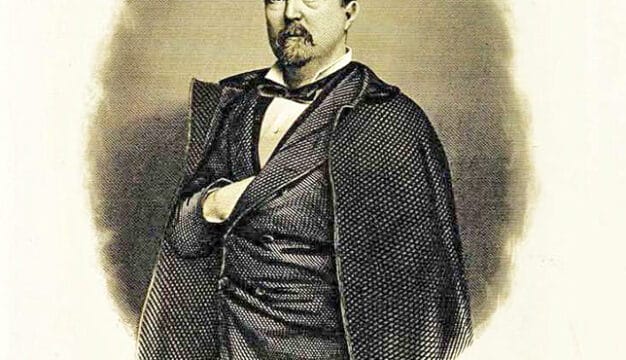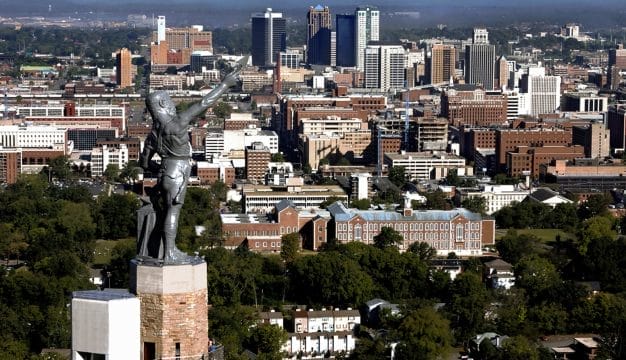The Southern Courier
The Southern Courier was an Alabama-based newspaper established in 1964 by journalism students from Massachusetts who were covering the civil rights movement and Pres. Lyndon Johnson’s War on Poverty in the American South. Despite the paper’s small size and relatively short publication life, the Southern Courier fulfilled an important and sorely needed role in the post-1965 South by providing African Americans and sympathetic whites with a broader sense of community in the fight for equality. The Southern Courier offered a more complex view of race relations in Alabama to the general public and today serves as a valuable resource for historians.
The Southern Courier had its roots in Mississippi’s Freedom Summer of 1964, a massive drive to register black voters in the state initiated by civil rights activists, many of them white college students from the North. Peter Cummings, on the staff of Harvard University’s student newspaper, the Crimson, and Ellen Lake, a former Crimson staffer and journalism student at Radcliffe College, had travelled to Mississippi to cover the events of the movement and grew incensed by the way Mississippi newspapers wrote about the black community, in particular about civil rights issues. Local papers tended to distort news of civil rights activities, if they covered them at all, and consistently refused to use courtesy titles in stories about blacks. Additionally, newspapers often sensationalized or exaggerated reports of criminal activity by black residents, contributing to a rise in racial violence.
During Freedom Summer, Cummings and Lake helped members of the Student Nonviolent Coordinating Committee (SNCC) produce a newsletter in Benton County, Mississippi. Soon thereafter, the two students began planning for a civil rights-related paper that would cover the stories of the civil rights movement and southern black life that had gone unreported in the region’s newspapers. A small group of volunteers, the majority of whom were white and from privileged backgrounds, began working to raise funds to print and distribute the paper, which they named the Southern Courier. These efforts began in earnest after several violent confrontations, including Bloody Sunday, took place in Selma, Dallas County, in March 1965. In their first few months, the volunteers used their well-to-do connections to raise $32,000, largely from white liberals in the Northeast. Geoffrey Cowan, an early recruit to the newspaper, was the son of a highly successful producer of such television programs as The $64,000 Question. Connections such as this helped to ensure that the paper had enough support to survive.
Cummings and Lake convinced Michael Lottman, a former editor of the Harvard Crimson and a reporter at the Chicago Daily News, to serve as the first editor-in-chief of the Southern Courier. The newspaper originally established its office in Atlanta. But because most of the stories the reporters covered were occurring in Alabama and Mississippi, the staff soon relocated to Montgomery. After the move, Lottman convinced two other former Crimson writers to join him in Alabama to complete the staff. Early on, Alabama civil rights activists Clifford and Virginia Durr befriended the young reporters and helped sustain the fledgling publication. By the end of the year, the Courier had at least one reporter in every large city in the state. The editors wanted the Courier reporters to become a part of the local communities to avoid the stigma that the young journalists were merely “outside agitators.” The reporters thus lived in the communities that they covered and were instructed to obtain a local driver’s license.
The Southern Courier’s first issue appeared in July 1965 with a circulation of 15,000 and quickly doubled its subscriptions. The weekly paper, published on Thursdays, typically consisted of six pages illustrated with images from staff photographers that included Jim Peppler, later a staff photograph at New York’s daily Newsday. By September, the paper had a permanent office in Montgomery, Montgomery County, and was earning praise from established publications such as Time magazine, the Atlanta Constitution, and New York’s Village Voice.
The Courier made good on its promise to cover underreported areas of politics and civil rights. Most of the stories focused on Alabama and Mississippi. The paper produced detailed articles on incidents such as inadequate medical services for blacks in Birmingham, unfair treatment of black tenant farmers by white landowners in the state’s Black Belt region, and school desegregation. The paper also covered stories that exposed divisions within the black community as well. At a time when southerners and southern newspapers remained sharply divided on the issue of race, the Southern Courier attempted to strike a more balanced approach to reporting.
The Courier gave detailed attention to two major developments of the post-1965 civil rights movement. The first was the growing importance of economic issues and Pres. Lyndon Johnson’s War on Poverty initiatives. The second issue was the expanding relationship between the Vietnam War and the civil rights movement. The paper published articles dealing with the rapid American buildup in Southeast Asia and the local responses to the escalating conflict. In April 1967, the Courier’s editors defended Martin Luther King‘s statement criticizing the war and chided newspapers such as the Montgomery Advertiser and the New York Times for denouncing the civil rights leader’s stance on the controversial issue.
The shift to more coverage of the Vietnam War coincided with a change in the make-up of the Courier newsroom. By 1967, most of the original Ivy League staff members had left the paper. Local reporters soon comprised a majority of the Courier’s staff and, by 1968, most of the workers were African American.
Despite its early fundraising successes, the newspaper faced near constant financial difficulties. On average, the paper brought in less than $300 per month in subscription sales and advertising revenue, far short of its production costs, which often amounted to more than $10,000 per month. Most white business owners refused to advertise in the Courier. From the beginning, the paper had relied on outside funding from grants and northern philanthropists to remain viable. In 1967, the Courier received a $60,000 grant from the Ford Foundation that helped sustain publication for another year. But by 1968, many of the paper’s most dependable donors had shifted emphasis to other issues, chief among them the increasing opposition to the Vietnam War. In November 1968, it became clear that the Courier could not continue without additional financial support; its last issue was published on December 7, 1968.
After the newspaper ceased publication, editor Michael Lottman and several other staff members entered law school. Lottman worked in the civil rights division of the U.S. Department of Health, Education, and Welfare (now the Department of Health and Human Services) for a number of years, and Ellen Lake graduated from law school and worked with the United Farm Workers and the American Civil Liberties Union. Courier photographer Jim Peppler went on to work for Newsday and also taught journalism at Adelphi University and Stony Brook University on New York’s Long Island. Peppler donated his more than 11,000 Southern Courier images to the Alabama Department of Archives and History. In April 2006, the former Courier staff met in Montgomery for a reunion celebrating the fortieth anniversary of the paper. The event was organized by Auburn University at Montgomery as part of its annual Clifford and Virginia Durr Memorial Lecture Series.
Additional Resources
Fee, Stephen M. “Hope Alongside Hatred.” Harvard Crimson, April 12, 2006.
Norrell, Robert J. “Reporters and Reformers: The Story of the Southern Courier.” Master’s thesis, University of Virginia, 1978.
Southern Courier Collection, Tuskegee University Archives, Tuskegee, Alabama



